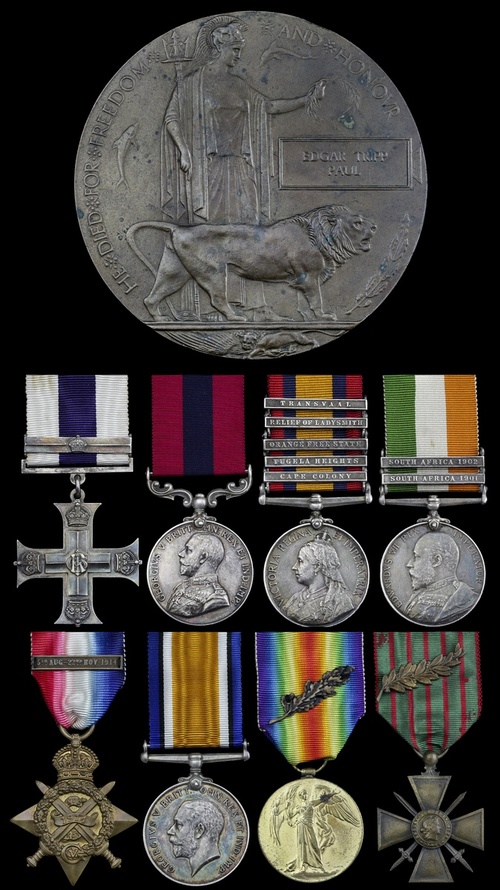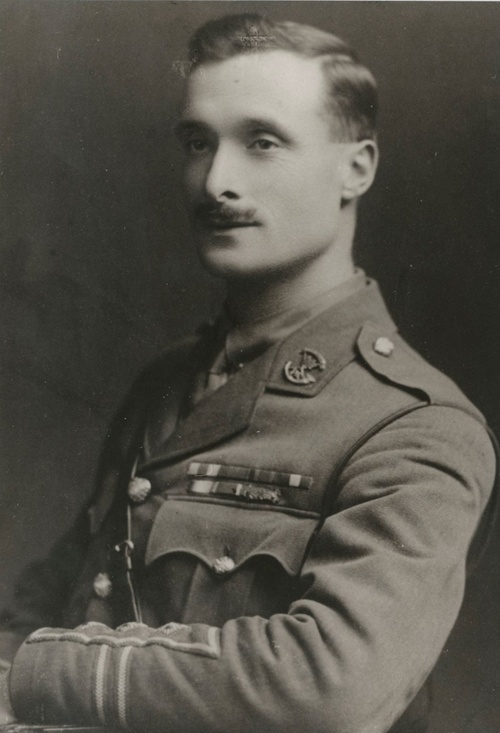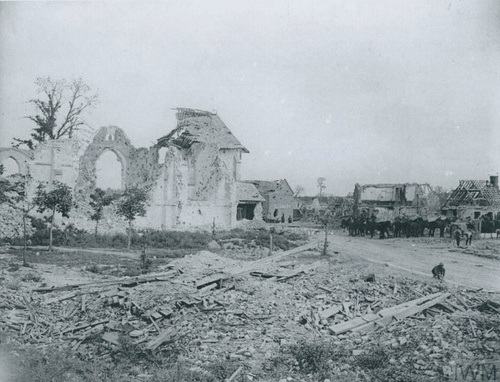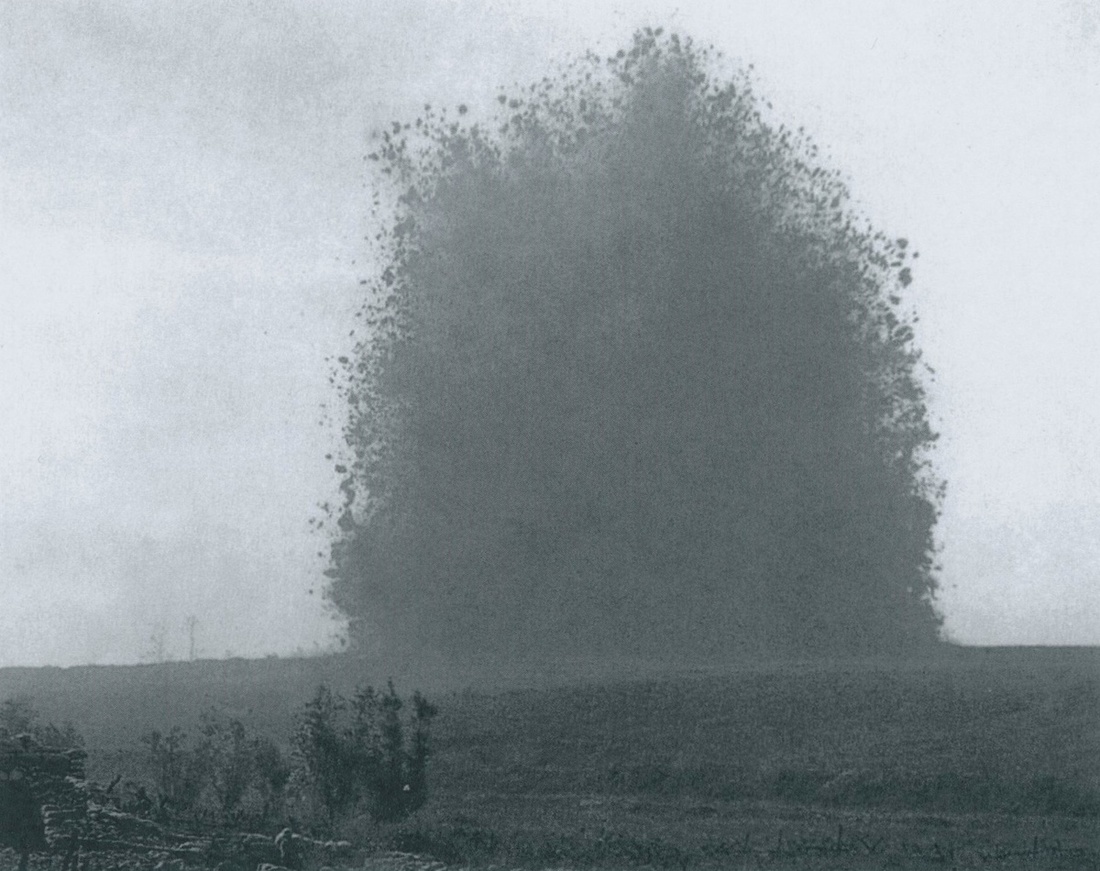Auction: 19002 - Orders, Decorations and Medals
Lot: 226
'In thinking back I am deeply moved when I recall those who, giving all, earned the right to rest in Flanders. There is Edgar Paul, whose friendship was worth untold gold, and, perhaps, the bravest man who ever faced an enemy.'
Major P. E. E. Chappell, M.B.E., D.C.M. writes of his comrades in preparation for the 1936 Remembrance Parade in the Bath Chronicle, 5 September 1936.
The remarkable and regimentally unique Great War 'Regimental Sergeant-Major's' M.C. and Bar, 'First Day of the Battle of the Somme' D.C.M. group of nine awarded to Captain & Adjutant E. T. Paul, 1st Battalion, Somerset Light Infantry
Having enlisted in his county unit aged 17, Paul saw service in South Africa and was amongst the first to land in France in 1914 - commissioned from the ranks he displayed truly outstanding gallantry in the subsequent years
He won a brace of M.C.s, a D.C.M., a Croix de Guerre and two 'mentions'- but would tragically be mortally wounded in the process of winning the Bar to his M.C. just 8 weeks before the war's end - leaving his widow with an infant daughter he never had the chance to meet: tragically, she had received a letter from his C.O. with the expectation that her gallant husband should recover from his wounds
Military Cross, G.V.R. with Second Award Bar, the reverse contemporarily engraved '4812 R.S.M. E. Paul 1st Bn. Somerset L. I.', neat traces of brooching to suspension and Bar reverse, as lovingly worn at one time by his widow and children; Distinguished Conduct Medal, G.V.R. (4812 R. S. Mjr: E. Paul. 1/Som: L. I.); Queen's South Africa 1899-1902, 5 clasps, Cape Colony, Tugela Heights, Orange Free State, Relief of Ladysmith, Transvaal (4812 Corl. E. Paul, Somerset: Lt. Inf.), rivets replaced with neat wire rings between third and fourth clasps; King's South Africa 1901-02, 2 clasps, South Africa 1901, South Africa 1902 (4812 Serjt: E. Paul. Somerset: L. I.); 1914 Star, with clasp (4812 Q. M. Sjt. E. Paul. 1/Som: L. I.); British War and Victory Medals, with M.I.D. oak leaf (Capt. E. Paul.); France, Croix de Guerre, reverse dated 1914-16, with palm, together with the recipient's Memorial Plaque (Edgar Tripp Paul), early campaign Medals very fine, the remainder good very fine (9)
Of the recipient's of the M.C. and Bar from the Somerset Light Infantry during the Great War 1914-19, none other than Paul also received the D.C.M.
M.C. London Gazette 24 August 1915 (Regimental Sergeant-Major). Citation as published in War Diary:
'For conspicuous ability and gallantry throughout the period of the campaign. Has rendered very valuable service at all times in the firing line, especially at Pilkem on 6 July 1915, when he organised carrying and working parties under heavy shell fire.'
Bar to M.C. London Gazette 1 February 1919:
'For conspicuous gallantry and devotion to duty near Etaing, on September 2nd 1918. When the left of the attack was held, he led a small party up a trench to tackle the machine guns which were causing the trouble. When he got near them, he left, the trench in an endeavour to rush them but was severely wounded. He then got a Lewis gun up, which dispersed the enemy. His determination and endurance set a fine example to his men.'
D.C.M. London Gazette 22 September 1916:
'For conspicuous gallantry in action. He took charge of a party of fifty men, who were carrying R.E. stores to the captured enemy line. When hung up by heavy machine-gun fire he skilfully got his party through by a circuitous route. He then returned with most valuable information as to the state of affairs. Throughout the rest of the day he did fine work.'
Croix de Guerre London Gazette 1 May 1917; Paul was personally invested by General Nivelle at 4th Army Headquarters on 17 February 1917.
Edgar Tripp Paul, a native of Wells, Somerset, was born in 1882. Educated at The Blue School, Wells from 1891-94, he enlisted in the Somerset Light Infantry, serving with the 2nd Battalion during the Boer War. Following the Boer War, he rose to become Senior Partner in the painting and decorating firm W. H. Paul & Son.
Great War - into the fire - first M.C.
Transferred to the 1st Battalion, Paul landed in France on 21 August 1914 as Regimental Quarter-Master-Sergeant. Following the actions of the first part of 1915, he was awarded a rare Military Cross in the rank of Sergeant-Major, which noted his part in the action at Pilkem. On 6 July the 1st Battalion, Rifle Brigade and 1st Battalion, Somerset Light Infantry attacked a section of German trenches east of the Yser Canal near Pilkem. The attack was successful but both units suffered heavy losses from German shelling and counter-attacks.
First Day of the Battle of the Somme - D.C.M.
Having received his first 'mention' for the latter part of 1915 operations (London Gazette 1 January 1916, refers), Paul would be promoted Regimental Sergeant-Major in charge of the Brigade Carriers with 2nd Lieutenant Collins on 30 June 1916. The First Day of the Battle of the Somme would be costly for the 1st Battalion, with losses of 463 men killed, wounded or missing. Lance-Corporal A. H. Cook, a comrade of Paul, gives a first-hand account of the carnage:
'It is a lovely morning and the birds are singing…The bombardment is now terrific the German lines are one cloud of smoke, that it seems to be impossible for anyone to live in such a hell…
We were able to stand on the parapet to get a better view, there is not a sign of life in front and no response from the German Artillery…Our men were timed to advance 10 minutes after the Rifle Brigade, but so eager were they to get on, that they left soon after…and consequently were caught in the open by these guns…
I led the platoon in to the German first line, and after a breather went in to the German second line, here I lost control owing to the men rushing from one shell hole to another in their advance. The ground is littered with our dead…The clearing parties are not doing their work properly in clearing the trenches of all Germans, as here and there parties of Jerrys are popping up and throwing grenades at us from all angles…
It is impossible to get any further…the shell holes are full of wounded and no hopes of getting them back…The Germans were now trying to force us out of their trenches, we got together what was left of us now and by collecting bombs from the dead and what Jerry left behind we managed to hold on…then the supply of bombs gave out and no more could be got, the Germans then gradually drove us back inch by inch through their superior supply of bombs…
We are a very small number here now and men are being killed and wounded in all directions…I have a terrible thirst caused by the fumes from the shells, the wounded are also crying out for water, but none is available…Our troops are gradually retiring leaving a very small garrison to hold the trench…This is getting pretty hot here now but our orders are to hang on to what we have until midnight, when we are being relieved…The enemy artillery has now started and are dropping shells thick and fast all around us…
We held on until relieved about 11 pm, an officer then said we may go back, we didn’t need telling again, we had had our belly full.'
Paul is also noted further in the War Diary of the events of the afternoon of 1 July:
'Only two Officers (Captain Harrington and Lieut. Greatham) now remained with the Somerset men, who with other troops were holding a part of the Quadrilateral. But about 1.30pm both these officers, having been wounded, went back to have their wounds dressed and the command of men of the Battalion devolved upon C.S.M. Chappell.
On the first day of the Somme Battles 1916 the casualties amongst officers were truly terrible, and all up and down the line platoons, companies, platoons and even Battalions (as with the Somerset L. I.) were temporarily commanded by N.C.O.s. And how well these splendid fellows "carried on!"
Under a galling fire R.S.M. Paul crossed No Man's Land leading the Brigade carriers.
Major Majendie arrived about 4.30pm with reinforcement of officers and took command of the Battalion which had been collected together in assembly trenches by R.S.M. Paul.'
For his gallant part on that famous day, Paul was awarded the D.C.M., which was presented by the G.O.C. 4th Division on 29 August. He was granted a permanent commission and appointed acting Adjutant the following day, being confirmed Adjutant on 6 OctoberIn the following year he won further laurels, gaining the French Croix de Guerre on 13 February (invested by General Nivelle, 17 February), being promoted Captain on 28 August and adding a further 'mention' (London Gazette 14 December 1917, refers) before the year was out.
Journey's end - Bar to M.C.
Having come through the previous four years of war, almost entirely from the front line - Paul would be detailed to the attack on Etaing on 2 September 1918, during the Battle of the Drocourt-Quéant Line. During the final advance to victory, the extensive and heavily-defended Drocourt-Quéant Line had been built in 1917 and ran from Droucourt in the north, along the Scarpe River to the east of Monchy toward Bullecourt, at which point it joined the Hindenburg Line. Having been moved up the line with the 4th Division on 31 August, Colonel Majendie had been briefed at noon for what was planned for his men. In combination with the 4th (Canadian) Division, the 4th (British) Division would attack on the left from the Arras-Cambrai road to the village of Etaing and attempt to advance to, and beyond, the Canal du Nord. The attack was fixed for Zero + 30 from 5a.m., September 1918. Preparations the night before the attack were far from ideal, for arriving at the assembly point on 11.45p.m., 1 September on a ridge near Eterpigny, they found no cover. Before it was possible to dig in, shells began raining down. Two officers and 20 other ranks were killed or wounded. The Somerset Light Infantry 1914-19 takes up the story:
'At 5.30am, half an hour after Zero, the Battalion, in artillery formation, advanced. The first German trench was reach where (in accordance with orders) a half for about an hour was made. The advance was then continued to the second German trench where another halt was called. In this position a certain amount of hostile shell fire was encountered. About 7.20a.m. the advance to the Red Line was continued...but as the Somerset men advanced violent machine-gun fire was opened on them from the left flank from the firection of Prospect Farm. It soon became apparent that the 12th Brigade had kept too far to the south and had neither cleared the Farm, nor the ground to the east of it. However, by moving to the right and taking such cover as the ground afforded, and by advancing in section rushes, Light and B Companies broke into the Line directly east of Eterpigny. The time was now about 8a.m.
The German trenches at this point were clear of the enemy, but from the left flank machine-gun fire was very persistent. In conjunction with the Hampshires, the 1st Somersets then advanced with the idea of enveloping the enemy in and east of Prospect Farm. But now the enemy's machine-gun fire increased in volume, and from the right front, and left, a withering fire swept the area over which the troops were advancing. It was thus evident that the Red Line has not been captured, and it was impossible to get beyond the Drocourt-Quéant Line, the left flank of the Somersets being about 700 yards south of Prospect Farm.
The position of the Somersets and Hampshires was now precarious. The left flank was in the air and there was considerable movement of hostile troops behind the hedges and banks of Prospect Farm, foreshadowing an enemy counter-attack. It was then decided to send a mixed party of Somersets and Hampshires up to the trench to the north to secure the left flank, while two platoons of the Seaforth Highlanders moved across the open ground in order to clear the area of enemy. But still the murderous machine-gun fire held up the attacking troops and finally a block was made in a trench running northwards at a point about 500 yards south of the Farm. During the attempt to clear the left flank, the 1st Somerset's lost their Adjutant, Captain E. Paul, who was mortally wounded. He was a very gallant officer and had done splendid work with the Battalion.'
In a letter received by Mrs. Paul at Lorne House, Priory Road, Wells, published in the Somerset and West of England Advertiser, Colonel Majendie wrote:
'Dear Mrs Paul,
You will now have heard by this time that your husband was wounded on September 2nd. I regret to say that it was a severe wound, but he is getting on very well. I went over this afternoon to see him in a neighbouring casualty clearing station. He is, of course, weak, but not so much as might be expected. If he maintains his strength he will be moved to the base in a few days, and when I trust that the worst will be behind him. He was hit in the back by a bullet when doing, as usual, a very gallant deed.
He will be a very great loss to me, and I owe him more than I can say for the loyal way which he has helped me, and for the very great work he has done for the Battalion.
He is a very gallant officer and gentleman, and you have every reason to be proud of him. I sympathise deeply with you in the anxiety you must be feeling now, but I hope that you will soon receive re-assuring news of him, and that he will soon be on the highway to a complete recovery.'
Paul would die of his wounds at 10.30a.m. on 10 September, being buried in the Aubigny Communal Cemetery Extension at 3p.m. on 11 September, with full honours and a Battalion Firing Party. He is also commemorated upon the Wells Memorial; sold together with the original Mention in Despatches certificate, dated 7 November 1917, in the name of '2nd Lt. (Actg. Capt.) E. Paul, M.C., 1st Bn, Somerset Light Infantry' and copied research and newspaper extracts.
Subject to 20% VAT on Buyer’s Premium. For more information please view Terms and Conditions for Buyers.
Sold for
£18,000
Starting price
£5800













